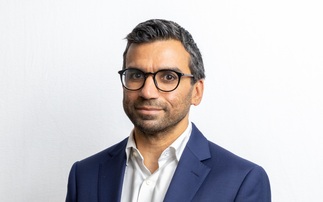
According to data from PWC, global assets in investments that consider ESG factors are expected to grow from $18.4trn in 2021 to $33.9trn by 2026. When it comes to Europe, ESG invested assets in Europe are predicted to hit $19.6trn, compared with $12.8trn in 2021. Meanwhile, North America, assets in ESG funds is expected to reach $10.5trn by 2026, up from $4.5trn seen in 2021.
Clearly, ESG and sustainable investing is the future of asset management and investment. But about those asset classes that are often seen as non-sustainable or non-ESG by default? Gold, for example, has long been seen as a core asset in a diversified portfolio. According to the Global Family Office Report, between 2019 and 2022, gold has typically accounted for 1-3% of family office portfolios.
Gold has the potential to become an even more desirable asset to hold in a diversified portfolio, owing to the generation-high inflation, geopolitical instability, market volatility and macroeconomic uncertainty.
However, the process of gold mining and processing is often viewed by many investors as economically and socially damaging. Gold mining has often led to negative ecological results locally and has historically been a very energy intensive process.
So for the sustainable-minded investor seeking a diversified portfolio, this presents somewhat of a conundrum. On the one hand, gold is a key portfolio diversifier. On the other hand, it potentially makes said portfolio less sustainable.
One way for investors to reconcile this problem is to invest in recycled gold. Recycled gold is over 90% less carbon intensive than mined gold.[1]
Indeed, for this reason, outside of financial markets, recycled gold is becoming increasingly favoured. There is a growing amount of discarded phones and other e-waste globally, encouraging some large hardware manufacturers to opt for recycled gold. For example, Apple now uses 100% recycled gold in the plating of the main logic board and the wire in the front camera and rear cameras. According to Apple, 2.6 million tonnes of mined rock equivalent have been avoided by using recycled content in the iPhone 13.[2]
However, thanks to the efforts of the The Royal Mint Responsibly Sourced Physical Gold ETC (RMAU) recycled gold may start to play a greater role in investor portfolios. The Royal Mint recently outlined its aims to increase its use of recycled gold on a best endeavours basis, meaning a portion of the ETC will be backed by gold bars composed of 100% recycled gold. The Royal Mint has an extensive physical coin and bar business which it can draw upon to source recycled gold.
Best in class gold miners
Of course, as preferable as recycled gold may be, the reality is that we may still need to extract more out of the ground to satisfy demand. As the World Gold Council notes, "Alongside its more established uses in electronics, dentistry and engineering, the unique properties of gold mean that it is increasingly being used as the foundation of new techniques and technologies in healthcare, environmental science and advanced coatings."[3]
But if gold mining is set to continue, this presents another potential option for sustainable minded investors: support the gold miners with the best and most sustainable practices. The AuAg ESG Gold Mining UCITS ETF (ESGO) seeks to offer exposure to an equal-weighted basket of 25 ESG screened companies that are active in the gold mining industry. The ETF tracks the Solactive AuAg ESG Gold Mining Index which focuses on companies that have low ESG risk characteristics.
It does this through the use of Sustainalytics to screen the mining universe for their ESG credentials, attributing a risk score based on their findings. Only the top 25 lowest ESG Risk companies are included within the index. The ESG credentials of ESGO have also been recognised by leading financial data firm MSCI, which has awarded the fund a AAA ESG rating.[4]
This post is funded by HANetf
[1] https://link.springer.com/article/10.1007/s11367-020-01809-6













